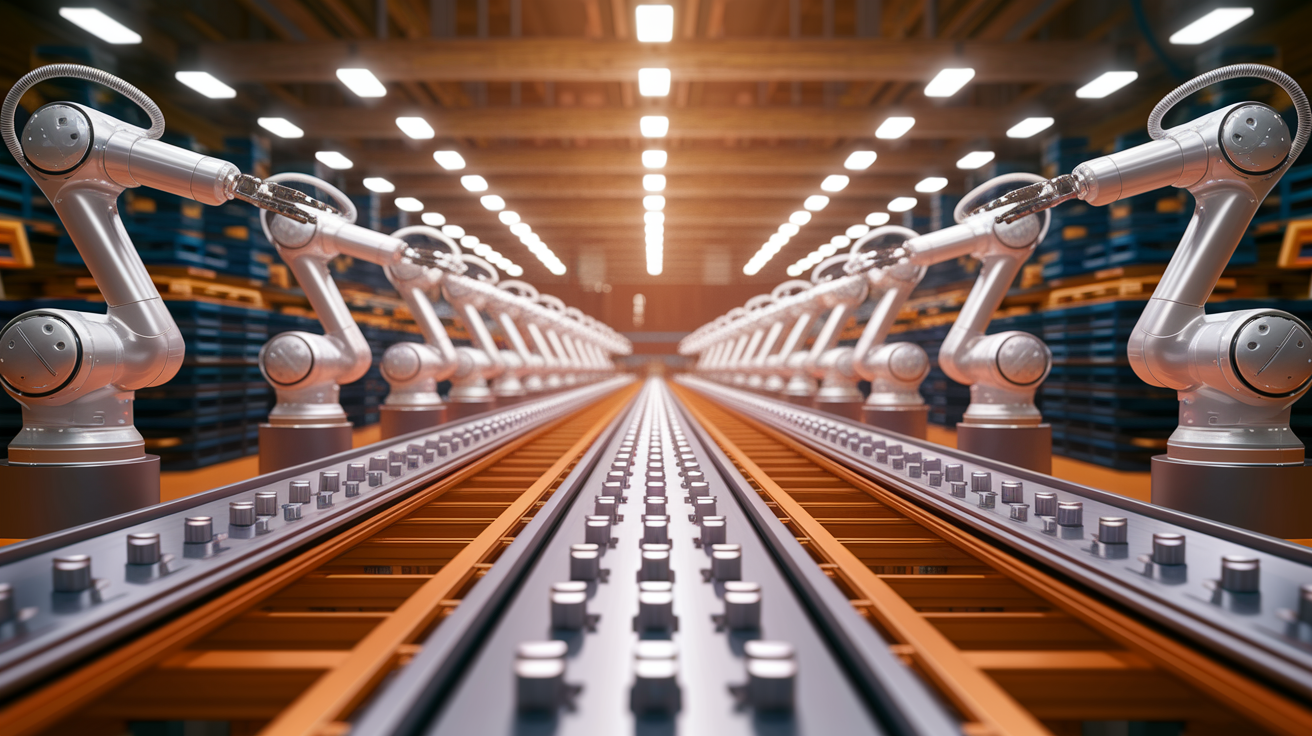The fusion of robotics and automation in industry is comparable to a perfectly synchronized orchestra, emphasizing efficiency and precision. For investors and private savers, these technologies not only provide a way to transform the industrial landscape but also offer significant growth opportunities. While robotics stocks stand out for their precise movements and safety advantages, automation stocks revolutionize the production landscape through cost savings and smart manufacturing. This interchange will define the future of industry and open up new markets.
Industrial Innovations: How Robotics and Automation Promote Efficiency, Safety, and Cost Savings

The industrial revolution has found a new ally in the constant search for more efficient processes and economic growth: the fusion of robotics and automation. These technologies provide companies with a way to revolutionize their production lines, leading to increased efficiency, safety, and significant cost savings.
Companies that invest in robotics stocks greatly benefit from the flexibility and adaptability of these technologies. Robots are now an integral part of various sectors, from automotive manufacturing to logistics. Their ability to quickly adapt to varying production demands enables companies to increase their production speed through automated processes. An interesting development in this field is collaborative robots, also known as Cobots. They work alongside human employees to distribute tasks more efficiently and improve overall performance.
Alongside this, alertness stocks offer investors access to technologies that allow continuous monitoring and optimization of production processes. With data-driven decisions guided by AI and machine learning, automation systems can establish optimal process conditions, which in turn significantly increases efficiency.
In terms of security, both technologies offer significant advantages. Robots take on dangerous tasks, reducing not only the risk of accidents for human workers but also increasing the reliability of production. Their precision and reliability are crucial for reducing error rates while maintaining high product quality. Automation systems complement this aspect with preventive maintenance strategies, which identify and prevent potential failures early.
Cost savings represent another strong incentive for integrating robotics and automation in industry. Although the initial purchase costs of robots can be high, they often pay off quickly through improved production efficiency and reduced energy costs. Additionally, automation offers the potential for significant cost reductions through process optimization and scalability of production units, reducing costs per produced item.
In summary, both robotics and automation offer invaluable advantages in industrial practice. While robotics stocks stand out for their flexibility and safe integration possibilities, automation stocks focus on continuous process optimization and adaptability. Both technologies represent essential investments for the future, laying the foundation for more sustainable and efficient production.
Robots and Automation: The Key to a Connected Industrial Future

The combination of robotics and automation is the catalyst for a transforming industrial image, laying the groundwork for growth and global expansion. The future potential inherent in the symbiosis of these two technologies is being harnessed by both tech giants and traditional sectors to define the production paradigms of the coming decades.
Humanoid Robots and Their Impact
Humanoid robots represent a revolutionary development in the manufacturing industry. By taking on tasks similar to those of humans, they not only offer gains in efficiency but also opportunities to address the challenges posed by demographic change. In many countries facing an aging population, these robots could provide a response to the growing labor shortage. Companies investing in humanoid robotics are at the forefront of an industrial revolution that could redefine both production and services.
Industry 4.0 and Connected Growth
Industry 4.0 is transforming the way companies operate, seamlessly integrating production lines with artificial intelligence, the Internet of Things (IoT), and automation. Companies like General Electric and Siemens demonstrate how connected sensors and data analytics can make existing processes not only more efficient but also more predictive. Through digital transformation, production facilities can be adapted almost in real-time to cope with demand fluctuations, while downtime is drastically reduced.
Technological Advances and Investment Opportunities
Within this dynamic environment, companies that align early with these technologies offer significant investment opportunities. Innovations in sensing technology and semiconductors are further lowering the costs of robotics and automation technologies, increasing their availability for a wider range of use cases. Amid technological advancements and market demand for increased operational efficiency, there is a vast field of opportunities for companies and investors alike.
Risks and Challenges on the Path to the Future
However, the robotics sector is not without its challenges. The constant flow of innovations implies the risk of technological obsolescence, which could threaten existing investments. Furthermore, market volatility, especially for stocks of companies with a strong focus on high-tech innovations, is a factor to consider. Long-term investment strategies, aiming for risk diversification, are crucial for positioning in this dynamic industrial environment.
Strategic Conclusion
Investing in the combination of robotics and automation promises to become a pillar of the future industrial landscape. The potential returns are high, provided investors are willing to closely monitor the nuances of technological developments and make strategic investments. Pooling resources to promote innovations in these sectors could not only transform key business outcomes but also generate tomorrow’s market leaders.